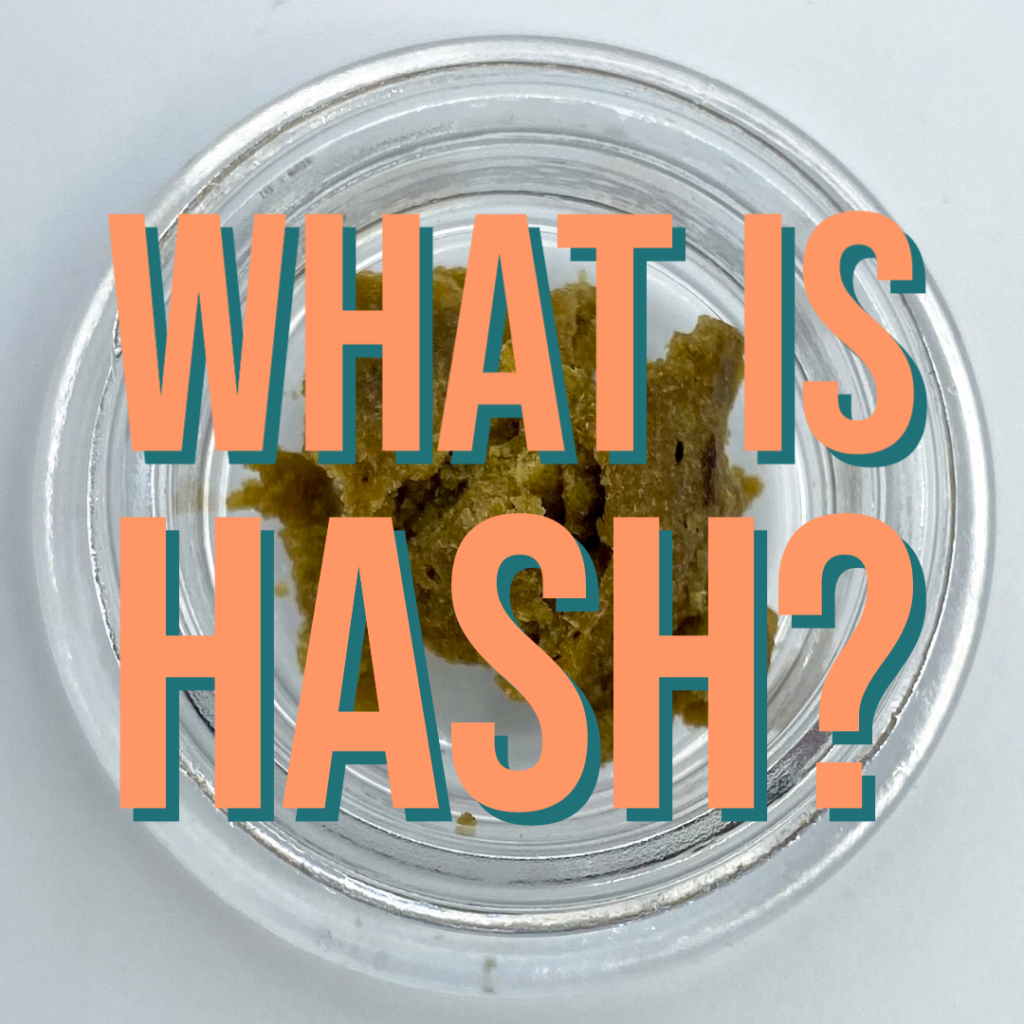Hashish, also known as hash, has a long history that dates back thousands of years. This is the world’s first cannabis concentrate. Although it’s mostly overshadowed today by whatever the new hype concentrate product is, it’s important to note where everything started.
It’s produced by collecting and processing the resin glands, also known as trichomes, found on the flowers, leaves, and stems of the cannabis plant. After separating the resin glands from the plant material it’s then compressed and shaped into solid or semi-solid forms. This resin-rich substance can vary in color, texture, and potency depending on the specific production methods and the cultivar of cannabis used.
Hashish is known for its higher potency compared to traditional cannabis flower, as the resin glands contain a concentrated amount of cannabinoids. It’s typically consumed by smoking, vaporizing, or ingesting. When smoked or vaporized, hashish produces a more potent and immediate effect than regular cannabis flower, leading to a stronger psychoactive experience. When ingested, the results can be very intense and at times have been known to produce hallucinogenic effects.
Humans all over the world have perfected the process of hash making over the years. Its origins can be traced to ancient civilizations in Asia, particularly in the regions of India, Nepal, and Afghanistan. Let’s look at how this amazing product took over the world with a brief overview of the history of hashish:
- Ancient Origins: The use of cannabis for various purposes, including hashish production, can be traced back to ancient civilizations such as the Assyrians, Scythians, and Thracians. The first recorded use of cannabis resin comes from the writings of the Greek historian Herodotus in the 5th century BC. He wrote “The Scythians put this kannabis under the bags, upon the burning stones; and immediately a more agreeable vapor is emitted than from the incense burnt in Greece. The company extremely transported with the scent, howl aloud…”
- Indian Subcontinent: Cannabis has been an integral part of Indian culture for centuries, with references to hashish appearing in ancient Hindu writings, such as the Atharva Veda and the Ayurvedic texts. In India, hashish was traditionally consumed in the form of charas, which involved gently rubbing the resinous trichomes off the plant material to create a sticky, dark-colored substance. This method of hash production has been practiced for centuries and is still prevalent in some areas today. It’s been used for medicinal, spiritual, and recreational purposes.
- Spread to the Middle East and North Africa: Hashish was introduced to the Middle East and North Africa by Arab traders around the 9th century. Its use spread throughout the Islamic world, particularly during the medieval period. Hashish became associated with Sufi mysticism and was used by some practitioners to aid in meditation and religious rituals. Most of their rituals involved trance-like ecstatic states that were often achieved by ingesting hashish either orally or by smoking it from a chillum.
- European Influence: During the 19th century, hashish made its way to Europe through colonial trade routes and interactions with the Middle East and North Africa. Its use gained popularity among artists, intellectuals, and bohemian circles. The French poet Charles Baudelaire and the writer Alexandre Dumas along with other notable figures started “Club des Hashischins”, where they explored hashish experiences with their friends. Something that was often digested at these parties was Dawamesc. It is an edible paste found in Algeria and other Arab countries. It contains cannabis tops and hash combined with sugar, orange juice, cinnamon, cloves, cardamon, nutmeg, musk, pistachios, pine nuts, and fat. The concoction was made popular by one of the members of Club des Hashischins, Dr. Jacques-Joseph Moreau. He was responsible for introducing this to his friends and the rest of European culture after his travels to North Africa. It was this edible that helped to popularize cannabis in Europe. He was also one of the first doctors to study the effects of hash on the central nervous system.
- Hashish and Prohibition: In the early 20th century, as global drug control efforts intensified, cannabis, including hashish, was demonized and became subject to strict legal regulations and prohibitions in many countries. International treaties like the Single Convention on Narcotic Drugs in 1961 classified cannabis as a Schedule I substance, restricting its production, sale, and use.
- Modern Production Techniques: The techniques for producing hash have evolved over time. Traditionally, it involved rubbing cannabis flowers between hands or on screens to collect the resin. This method is known as hand-rubbed hash or charas. Later, sieving techniques were developed, such as using silk screens or fine mesh to separate resin glands from plant material. These methods gave rise to various types of hash, including ice water hash, dry sift hash, and hash oil. These more advanced techniques have allowed companies to produce larger quantities of hash more efficiently. There is a growing interest in developing standardized production methods and quality control measures for hashish to create concentrates with precise cannabinoid profiles and consistent potency.
- Recent Legalization and Regulation: In recent years, there has been a shift in cannabis policies in various parts of the world. Many countries and states have decriminalized or legalized the use of cannabis for medicinal or recreational purposes. This changing landscape has led to increased research and interest in cannabis and its derivatives, including hashish. As these laws change, this means that hashish will become more widely accessible.
I think as we collectively learn more about the cannabis plant and what it has to offer, folks will want to explore the concentrated cannabinoids from the flower. There’s nothing more perfect than preserving a cultivar through some delicious full spectrum hash. This natural plant resin has existed all this time for a reason. It has a rich and sticky history with various production methods resulting in a diverse range of hash types worldwide.
The history of hashish is a fascinating journey that highlights its cultural significance and the evolving societal attitudes and regulations surrounding cannabis. From ancient civilizations to the present day, hashish has played a role in human rituals, medicine, and recreation, shaping its place in the global cannabis landscape. Basically, without hash we wouldn’t be here today!
Stay safe and stay stoned!


